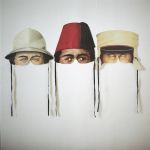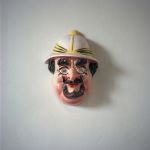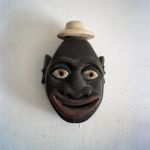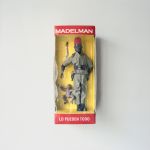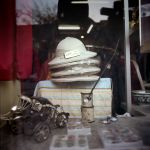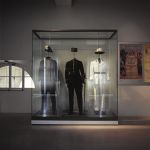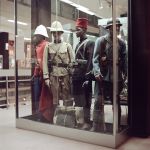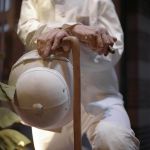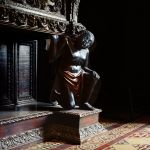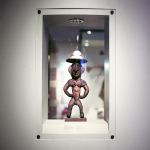OUTRE-MER, mémoires coloniales / OVERSEAS, memories of colonialism
(extraits / extracts)
PHOTOGRAPHIES, ICONOGRAPHIES, OBJETS, INSTALLATION
La série Oui mon commandant, questionne les réminiscences d'une culture coloniale empreinte de stéréotypes, telle la figure du colon qui hante toujours l'espace public, les discours politiques, les médias français et les vitrines de nos magasins occidentaux.
Reprenant la forme accumulative des salons de curiosités, l'installation Le salon colonial présente la matière rassemblée autour du projet et propose des repères historiques et iconographiques depuis les débuts de la colonisation jusqu'à aujourdhui.
The Oui mon commandant (Yes Sir) series, still a work in progress, raises questions about a colonial culture steeped in stereotypes the image of the colonial settler, forever presiding over the public square, the French politics and media, the western shopfronts.
Adopting the style of a colonial showcase of curios, the exhibition presents the material collected over the course of the project, offering historical and visual landmarks from the beginnings of colonialism to the present day.
OUTRE-MER comprises three series of photos: Monuments, Plaques and Oui mon commandant (Yes Sir). This project was backed by Espace Khiasma, Les Lilas, Paris.
Salon colonial, Espace Khiasma, 2008
Dossier de presse du projet OUTRE-MER : ![]()
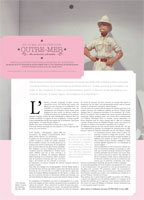
OUTRE-MER est composé de cinq parties dont trois photographiques : Monuments, Plaques et Oui mon commandant. Une série de textes extraits de discours et d'écrits divers sur la question coloniale, intitulée Les citations et un travail littéraire composé de treize récits écrits à partir des photographies par l'écrivaine Sophie Maurer sont publiés dans le journal de l'exposition.
- La série photographique Monuments nous révèle à la fois la présence et l'invisibilité dans l'espace public de ces objets de mémoire liés à la colonisation française. La photographie comme le monument commémoratif nous montrent quelque chose mais ne nous dit rien. La taille imposante des ouvrages nous tient à distance et rend nécessaires le rapprochement et l'analyse des détails. Le monument n'est qu'un pansement sur une plaie mal cicatrisée et la célébration de la mémoire n'apporte rien si les traumatismes ne sont pas expliqués et mis à distance.
- Dans l'installation des Plaques, des écritures apparaissent. Elles nous racontent les mémoires partielles et partiales de la colonisation française : les conquêtes, les soldats coloniaux et les luttes pour les indépendances. Ces plaques commémoratives nous révèlent qu'il y a eu, à un moment précis, à la suite d'événements historiques, la nécessité d'inscrire dans la pierre le devoir de mémoire. Dans un même mouvement d'apparition et de disparition, il est question d'une confrontation des mémoires dans une société qui peine à se projeter dans un passé et un avenir commun. Un glissement intervient, entre mémoire intime et collective, entre mémoire et histoire, entre interprétation et réappropriation de la réalité.
- La série Oui mon commandant, questionne les réminiscences d'une culture coloniale empreinte de stéréotypes, telle la figure du colon qui hante toujours l'espace public, les discours politiques les medias français et les vitrines de nos magasins occidentaux.
Reprenant la forme accumulative des salons de curiosités, le Salon colonial présentait la matière rassemblée autour du projet et proposait des repères historiques et iconographiques depuis les débuts de la colonisation jusqu'à aujourd'hui.
Télécharger le dossier de presse : ![]()
Télécharger le journal d'exposition, espace Khiasma 2008 : ![]()
Overseas, memories of colonialism, Yo-Yo Gonthier, Marie Gueret
Photographs, sound and video installations Espace Khiasma, May-June 2008
The remnants of France's colonial empire formed the backdrop to this project. Nature and forgetfulness may obliterate the personal and collective memory of what was both a glorious and bloody past, but that memory remains deeply ingrained in our countrys questioning of identity.
The project used the photographic eye as a starting point to trace this history. Work began in 2003 in the tropical agronomy gardens in Nogent-sur-Marne, site of the 1907 colonial exhibition, where some of the original buildings still remain. I was struck by how dilapidated and almost invisible the monuments to the colonial soldiers were, buried within the vegetation. From these beginnings, the project continued from 2006 to 2008 in various towns across France, giving rise to a first exhibition in France et Espace Khiasma, Les Lilas, Paris in May 2008.
OUTRE-MER is a five-part show, including three photography exhibits entitled Monuments, Plaques and Oui mon commandant (Yes Sir). The exhibition catalogue brings together extracts from discussions and written presentations on colonial issues by the writer Sophie Maurer, using photos as a backdrop.
- The Monuments exhibit reveals how these memorials to France's colonial past are present yet invisible in public spaces. The photos, like the commemorative monuments, show us something but tell us nothing. The imposing scale of the monuments keeps us at a distance meaning a closer examination is needed for any detailed analysis. The monuments are merely bandages on a badly healed wound honoring memory serves no purpose if the trauma has not been explained and dealt with.
- In Plaques, we see written records which are both one-sided and incomplete accounts of French colonialism: the victories, the colonial armies and the struggle for independence. Following in the wake of historical events, these commemorative plaques epitomized the decision to inscribe in stone the duty of remembering lest we forget Half forgotten memories are summonsed, forcing a society which is struggling to find a common past and future to confront its memories. What results is a shift between personal and collective memory, between memory and history, between the interpretation and reappropriation of reality.
- The Oui mon commandant (Yes Sir) exhibit, still a work in progress, raises questions about a colonial culture steeped in stereotypes the image of the colonial settler, forever presiding over the public square, the French politics and media, the western shopfronts.
Adopting the style of a colonial showcase of curios, the exhibition presents the material collected over the course of the project, offering historical and visual landmarks from the beginnings of colonialism to the present day.
Download the exhibition catalogue, Espace Khiasma 2008: ![]()
Download the press pack: ![]()
PRESSE
DEUTSCHE WELLE, entretien radio avec Sandrine Blanchard sur la mémoire coloniale, 05.07.2010 (12'34'') :
AFRICULTURES, un entretien avec Marian Nur Goni pour africultures.com, 10.05.2010 : Lire l'article
REVUE HOMMES ET MIGRATIONS, N 1282, un article de Dagara Dakin, 12.2009 : ![]()
VERBAL.COM, an article by the south african Daniel Cuthbert, january 02, 2010 : Read article
MIKI NITADORI, monday, january 11, 2010 : Read article
MIKI NITADORI, monday, june 30, 2008 : Read article
AFRIQUE IN VISU, lundi 16 juin 2008 : Lire l'article
















